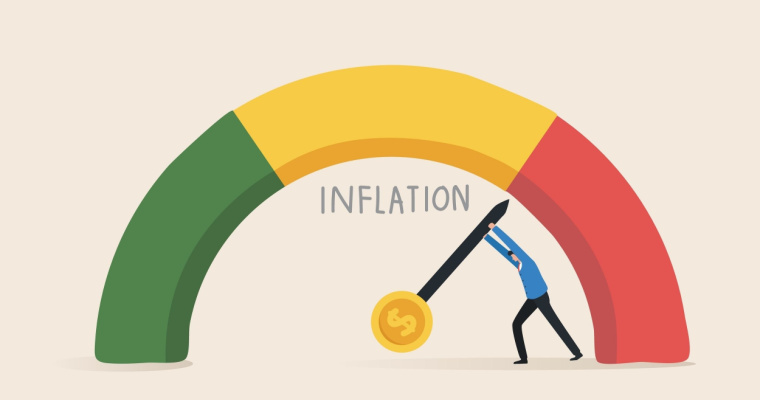Key Difference Between Factoring and Forfaiting in Trade Finance

Factoring and forfaiting have grown in prominence as major sources of export financing. For the uninitiated, these two terms are interchangeable. Nonetheless, these two terms differ in their nature, concept, and scope.
Both these methods allow businesses to mitigate the risk of delayed payment and maintain a steady cash flow. Let’s read more about these two options below.
What is Factoring?
Factoring is a financial arrangement that allows businesses to receive payment upfront for their accounts receivable rather than waiting for payment from their customers. It involves the sale of accounts receivable (of the company) to a third party, known as the factor, at a discounted rate. The factor then advances payment to the business and assumes the risk of non-payment in exchange for a fee.
Factoring is a common practice in international trade, and the parties can negotiate the terms of their contract in terms of costs, time, legalities, and more.
What is Forfaiting?
Forfaiting is another type of financial arrangement that allows exporters to convert a credit sale into a cash sale by relinquishing their rights to receive payment for goods or services rendered to an importer in exchange for immediate cash from a forfaiter, a financial intermediary that facilitates international trade.
This transaction is typically supported by negotiable instruments such as bills of exchange and promissory notes and is used to finance the sale of receivables on capital goods, especially those with short maturities and high value.
Also Read
Comparison Between Factoring and Forfaiting
| Comparison | Factoring | Forfaiting |
| Definition | Factoring involves business owners selling their pending invoices to a third party in exchange for fast cash. | Forfaiting is an arrangement in which exporters can sell their receivables to a forfaiter to receive quick cash payments. |
| Trade type | Applicable to both domestic and international trade. | Largely covers international trade. |
| Protection | Is not protected against exchange rate changes. | The forfaiter, in many cases, may absorb the risk of currency fluctuations. |
| Goods | Typically deal with consumer goods and products or services. | Is more involved with capital goods like machinery, equipment etc. |
| Recourse | Varies from case to case and can be recourse or non-recourse based. | Is always without recourse. |
| Risk | Is borne by the seller. | Is transferred to the forfaiter. |
| Time period | As it deals with short-term receivables, the maturity period is equal to or less than 3 months. | Maybe longer as forfaiting deals with medium- to long-term accounts receivables. |
| Financing | Only up to a certain percentage, ranging from 80%-90%. | May involve full finance, up to 100%. |
| Cost | The seller is to bear the cost. | The cost is to be borne by the buyer. |
| Negotiable Instrument | There is no involvement of negotiable instruments. | Negotiable instruments like bills of exchange and promissory notes are involved. |
| Secondary markets | There is no involvement with secondary markets. | Receivables may be sold in secondary markets. |
Key Differences Between Factoring and Forfaiting (In Terms of the Below Factors)
1. Process
Factoring involves the sale of receivables to a third party, such as a factoring company, lender, or bank, while forfaiting is a financial arrangement that typically falls under export financing, in which an exporter sells their rights to trade receivables to a forfaiter in exchange for immediate cash payment.
2. Timing
Factoring involves the sale of short-term accounts receivables, typically due within 90 days or less, while forfaiting involves the sale of medium to long-term accounts receivables.
3. Receivables
Factoring typically involves the sale of receivables for ordinary or consumer goods and services, while forfaiting concerns itself more with heavy-duty capital goods.
Points to Remember About Factoring and Forfaiting in Trade Finance
1. Hedge the Risk of Delayed Options
International trade financing options, such as factoring and forfaiting, provide a way for businesses to hedge the risk of delayed payments. However, a few key considerations must be kept in mind when deciding which option is the best, per your unique business circumstances.
2. Assess Creditworthiness
When concerning factoring and forfaiting, first and foremost, it’s important to carefully assess the buyer’s or issuer’s creditworthiness to determine the likelihood of timely payment and the potential for loss if they default on their obligations. Next, fees and exchange rates should be considered, as these can vary depending on the terms of the agreement and many other factors.
3. Complex Legal Agreements
Both factoring and forfaiting involve complex legal agreements, so it’s important to seek the advice of a lawyer or financial advisor to ensure that all necessary legal protections are in place.
Final Word
International trade financing options such as factoring and forfaiting provide a valuable solution for businesses dealing with long payment cycles in international trade. By allowing companies to receive payment upfront, these methods can help dilute the risk of delayed settlement, ensuring smooth and continued business operations. By utilising factoring and forfaiting, businesses can strike a balance between payments and continue to thrive in the global marketplace.
FAQs
Ans: In international trade, factoring involves selling accounts receivable to a third party at a discounted rate.
Ans: Factoring and forfaiting can be useful finance arrangements, particularly in international trade, where payment may take longer to arrive. However, these financial options may not be right for every business. It’s important to carefully consider the buyer’s or issuer’s creditworthiness, fees and exchange rates, and legalities before deciding which option is best for your company.
Ans: Yes. Both factoring and forfaiting involve some level of risk, particularly if the buyer or issuer defaults on their obligations.
Ans: Typically, bills of exchange and promissory notes are used in forfaiting. In many cases, it is also backed by letters of credit.
Ans: Factoring can be more expensive than other forms of financing and may not be suitable for businesses with less creditworthy customers or those concerned about the potential impact on customer relationships. It can also result in a loss of control over the collection process and direct communication with customers about payment.
Disclaimer
This article is solely for educational purposes. Navi doesn't take any responsibility for the information or claims made in the blog.

Customer’s Feedback
No comments found.What is Primary Deficit? – Example, Formula & Measures
What is a Primary Deficit? Primary Deficit is the difference between the current year’s fiscal... Read More »What is Financial Ratio Analysis? – Objectives, Types and Uses
Ratio analysis is a process that allows people to assess the financial health of a company. Using t... Read More »Treasury Management – Its Functions, Types and Benefits
Even the most well-funded business can run into huge losses if it does not have the resources to fu... Read More »How Anti Money Laundering Combats Financial Crime?
Anti Money Laundering (AML) is a system of rules, laws, regulations, and procedures that financial ... Read More »What is Salvage Value and Why is it Useful?
Salvage value, also called scrap value, is the value of a specific asset after its useful life. In ... Read More »What is Factoring and its Importance in Financial Management?
Factoring is a practice in which a company buys the accounts receivable of another company at a dis... Read More »What is Budget Surplus: Its Effects, Advantages and Impact with Examples
When the revenue of a government, business, or individual exceeds its expenses in a given period, i... Read More »What is Balanced Budget – Components, Importance and Examples
In financial planning or the budgeting process, a balanced budget is one in which total anticipated... Read More »What Does Inflationary Gap Mean in Macroeconomics?
In macroeconomics, the difference between current and potential GDP is known as a gap. This gap is ... Read More »What is Accounting Conservatism in Finance and How Does it Work?
Accounting conservatism involves a conservative set of accounting guidelines wherein the worst-case... Read More »Multiple Linear Regression (MLP) – Uses, Formula and Examples
Various statistical models help in establishing a relationship between different variables. Multipl... Read More »What is Debt Funding and Why Should You Choose it?
A business can raise funds by borrowing through debt funding. Although debt can take many different... Read More »Top 10 Chit Fund Schemes in India in 2023
Chit funds are one of the most popular return-generating saving schemes in India. It is a financial... Read More »10 Best Gold ETFs in India to Invest in April 2023
Gold ETFs or Gold Exchange Traded Funds are passively managed funds that track the price of physica... Read More »10 Best Demat Accounts in India for Beginners in 2023
Creation of Demat accounts revolutionised the way trades were conducted at the stock exchanges. It... Read More »20 Best Index Funds to Invest in India in April 2023
What is an Index Fund? An index fund is a type of mutual fund or exchange-traded fund (ETF) that... Read More »Best Arbitrage Mutual Funds to Invest in India in April 2023
Arbitrage funds are hybrid mutual fund schemes that aim to make low-risk profits by buying and sell... Read More »10 Best SIP Plans in India to Invest in April 2023
What is SIP? SIP or Systematic Investment Plan is a method of investing a fixed amount in ... Read More »10 Best Corporate Bond Funds in India to Invest in April 2023
Corporate bond funds are debt funds that invest at least 80% of the investment corpus in companies ... Read More »10 Best Bank for Savings Account in India [Highest Interest Rate 2023]
Savings account is a type of financial instrument offered by several banks. It lets you safely depo... Read More »
































